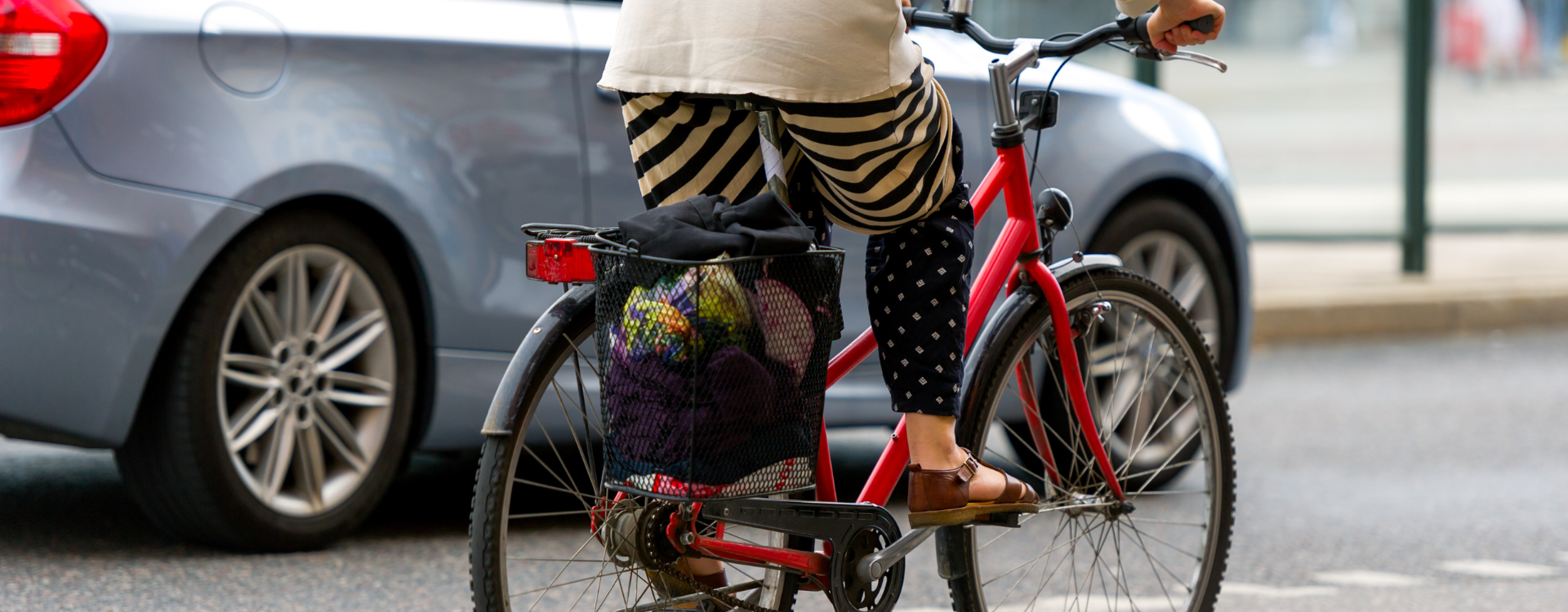
Safe cycling infrastructure. What will it take?
It’s said that hindsight is 20:20, but foresight can be pretty clear too… if you’re paying attention.
On Monday 8th August a woman was ‘doored’ and knocked into traffic by an ill-timed opening of a car door while cycling to work through Salthill. The careful balancing act cyclists perform of leaving enough space for doors to open, while staying aware of the intimidating cars behind, is a perilous one. This was not an unexpected event, it is a predictable result of the dangerous and prevalent state of the roads in Galway. In a heart-wrenching open letter to Galway County Councillors in June of this year, the parents involved in the Galway Cycle Bus initiative spelled out exactly what will happen if we fail to design safe roads:
“A child will die on our roads and we will see the outpouring of grief. Our local leaders will be on the airwaves to offer their condolences. Stories will be written, hands will be wrung, teddies and white crosses will be placed with tenderness and tears.
A dead child will be accepted as a tragic accident rather than a predictable death by design. There will be no accountability by the road engineer or the council. No one will take the responsibility. The news cycle will move on. And the family will mourn for the rest of their lives.”
Galway Cycle Bus initiative were not alone in raising the alarm, the Galway Cycling Campaign has been advocating for better active transport infrastructure for over a decade, with an increasing number of individuals. These advocates have no agenda apart from being road-users or parents who are becoming more vocal about the unsafe state of our streets.
We get what we design for
People make mistakes. Accidents happen, and people sometimes disregard the safety of others in the name of speed or convenience. We plan for these things all the time. Roads have crash barriers and rumble strips, buildings have fire escapes, locks and alarms, and stairs have hand rails. In Ireland however we have failed to fully acknowledge that the mingling of pedestrians, wheelchair users and cyclists with motorised vehicles is inherently dangerous. We know this as fact, in July of this year it was reported that 1,700 cyclists needed hospital care due to collisions. Nearly 600 of those were under 19.
A study in 2021 found that 56% of collisions involving cyclists in Ireland were with a motorised vehicle. The figures are there for all to see but we still live in denial. We know the truth, but we refuse to act proportionally. Suggestions of removing space for cars and increasing space for more vulnerable road users are met with derision, opposition, and often even outrage. It is hard to understand why there is such vehement opposition to the alternative which would allow the additional benefits of increased space for biodiversity, better air quality, quieter streets and less congestion for those whose car is essential are dismissed.
Acting proportionally can be difficult to imagine, fortunately we can walk in footpaths already paved. In the 60s and 70s, the Netherlands was not the cycling haven it is now. Widespread “Stop de Kindermoord” protests, over the thousands of road fatalities every year, led to one of the biggest transitions in Europe. While the car was recognised as a functional part of the transport infrastructure, it no longer ruled completely. While car ownership is still quite high in the Netherlands, infrastructure was built to physically separate cars from cyclists, walkers and other vulnerable users. Where mixing was inevitable cars are constantly encouraged to slow; ‘Cars as Guest’ signs proliferated on residential streets placing drivers at the bottom of the prioritisation scale.
If I am afraid to cycle down some roads; is it reasonable to expect a child to?
Mass cycling events in Ireland, taking place across the country from Galway, to Naas to Dublin, are mimicking the historic “Stop de Kindermoord” protests. There is a real, and growing, desire for safe active transport infrastructure in Ireland. The negative externalities of mass private transport including road fatalities, loss of pubic space and poor air quality are becoming harder to ignore as the number of cars increase. The loss of independence in children – who can non longer make their way to school or a friend’s house alone – is very much linked to our ever congested roads. If I am afraid to cycle down some roads; is it reasonable to expect a child to?
The solution for too long has been to treat the symptom and add to the number of cars moving short distances on dangerous roads. We need to tackle the root of the problem and ensure that our roads are no longer dangerous – for children cycling to school down rural roads or adults cycling to work in Salthill.
We know that without change there will be more hospitalisations, more traumatic near-misses, more deaths. We also know what we need to do. We now just need the political will to do it.

